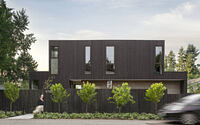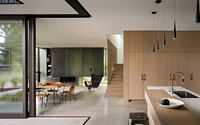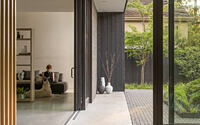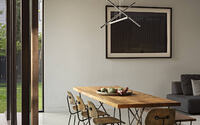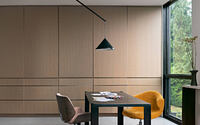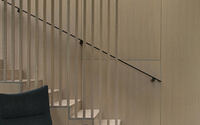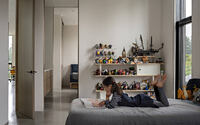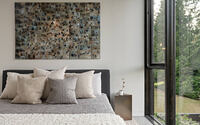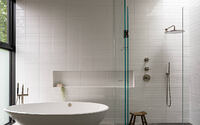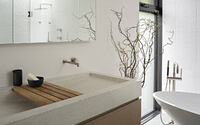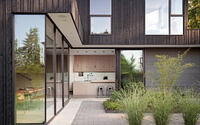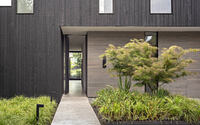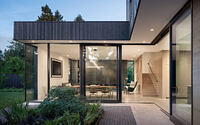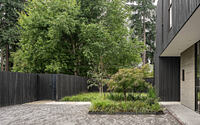Yo-Ju Courtyard Residence by Wittman Estes
Recently designed by Wittman Estes, Yo-Ju Courtyard Residence is an amazing modern home situated in Seattle, Washington, United States.









About Yo-Ju Courtyard Residence
Embracing Privacy in an Evolving Suburban Landscape
As cities become denser and privacy becomes scarce, the suburban single-family home must adapt by looking inward. Yo-Ju Courtyard House, meaning “secluded living” in Mandarin Chinese, embraces the future of suburban density by providing a private experience, even while it is situated next to a busy arterial street in Bellevue’s Clyde Hill neighborhood.
To address the challenges of increased traffic, noise pollution, and diminishing natural vegetation, the architects designed the house to look inward rather than outward. Drawing upon Chinese courtyard and garden design traditions, as well as Chinese landscape painting techniques, architect Matt Wittman reimagines the traditional single-family home.
Designing around Courtyards
The design comprises three key elements: 1) the entry courtyard, screened from busy NE 24th Street; 2) the living volume of the house, featuring an opaque facade facing the street and a transparent facade to the rear; and 3) the secluded zone in the rear yard, where children can play freely. The courtyard house seamlessly connects space with nature. The entry courtyard serves as a threshold between the street and the interior. A black-stained, tight knot cedar fence marks the transition, as a concrete path meanders through a bed of grasses and a Japanese Maple tree. Inside the secluded garden courtyard, urban life vanishes, replaced by oak casement in the kitchen, concrete flooring, and floor-to-ceiling sliding doors.
By creating the illusion of large spaces that blend seamlessly with outdoor views, the house occupies one-third less of a footprint than was allotted. Chinese landscape paintings utilize an “atmospheric perspective” technique to enhance the perception of spatial depth. Yo-Ju applies this technique to create “visually larger spaces than what actually exist—the eye follows the level of oak stairs, the large sliding doors, and finally reaches the garden courtyard beyond,” explains Matt Wittman. This spatial efficiency paves the way for a new suburban housing model, offering maximum energy savings, increased planting areas, privacy, and views into nature while maintaining a reduced footprint.
Balancing Public and Private Spaces
According to Matt Wittman, the house employs “two major program zones to shape layers of privacy and community” inspired by the ancient Chinese garden design principle known as “Big Hide.” Communal spaces are centralized in the house, while private spaces occupy the front of the house on two levels. Concealed in the private areas, the upper floor revolves around a craft and teaching space for the family’s three children. In the communal spaces, the house opens up to a lounge and kitchen, leading to the main living and dining areas. These public spaces are arranged around the garden courtyard, with open corner doors connecting all the spaces. Through designs rooted in courtyards, transitional program zones, and borrowed views, the Yo-Ju Courtyard House aspires to create a new model for single-family housing.
Photography by Andrew Pogue
- by Matt Watts